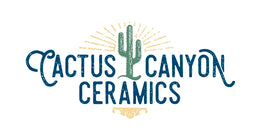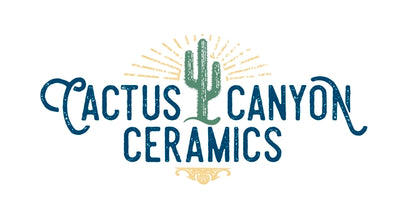Springtime in Sevilla is my favorite time of year. The air is filled with the fragrance of orange blossoms and a cool, moist, stone smell that means the spring sun is baking dry the cobblestone streets and old stone buildings. It is always an exciting time of year because the city fills with people for Holy Week parades and then again for the Seville April Fair shortly after.

One of my absolute favorite spring sounds of Sevilla is the clop, clop, clop of horses drawn carriages. Spring brings them out in droves and when they pass, I always turn to look and ogle the driver and carriage occupants. I try to imagine what the occasion is and where the people might be from. Usually you see families or sweethearts snuggled into the seats, peering out at the old city. ….And I always look at the horses.
I learned to love horses early in my life, having grown up on a ranch in Montana. And for a horse lover, there is no better place on earth than Andalusia. During my extended youth, I had the chance to work with many types of horses, including Quarter Horses, Arabians, Morgans, Thoroughbreds and many mixes of all of the above. I have been out of the horse arena for decades, but upon moving to Andalusia in 2009, I find many opportunities to see horses up close. I have grown to believe that some of the most well built, well proportioned and well behaved horses in the world are bred and raised in Andalusia. I have become a huge fan. In the States, I have gone to many county fairs, rodeos and parades, and you always see a plodder of two (or dozen). A plodder is a horse that is somewhat lazy, somewhat overweight, somewhat stubborn or spoiled. Here in Andalusia, you don’t see many plodders. Even the carriage horses are beautifully built and move well. There are probably many reasons the gene pools are so distinct, and it would fun to research that a bit but it is sufficient to say that in general, the horses of Andalusia are outstanding specimens.
A great opportunity to see horse drawn carriages is the day before the April Fair opens. Sevilla holds “El Caballo en el Real” which is basically a parade of carriages that are judged by a group of important stuffed shirts. There are many types of carriages; large, tall, four seaters, two seaters, and many with a perch on the back for a footman. Several of the carriages are drawn by teams of five animals, with three in front, and two behind. The teams are horses or mules and usually all closely matched in size, color and markings.



The parade participants are dressed in period costumes typical of the landed gentry of Andalusia. The carriage route starts near the Torre de Oro (Tower of Gold) meanders through several streets, then through the bull ring, before a half mile trot down to the Maria Luisa Park which they pass through before finishing at the Plaza de España.
Interestingly, during the parade hours, the city police do not permit the circulation of other carriages. I imagine this is from experience. I can easily envision a carriage full of drunk Brits galloping down the cobblestone streets, thumbing their noses at the Sevillan officials huffing and puffing after them.

To my surprise I have discovered that most all the horses in the Caballo parade are studs (fully equipped male horses). Where I grew up, 1 in 50 horses were kept as a stallion, and the grand majority of riding or carriage horse were geldings or mares. From my experience, studs are quit spirited, hard to handle, and even dangerous when other stallions or mares are around – not ideal for clop, clop, clopping in a parade. I find it amazing to see five stallions harnessed together and behaving. Even the beautiful, big, sterile, mule teams in traces and the heavier horses pulling the cavalry’s canon are studs. Incredible! It is clear from how the horses behave that the horse trainers in Andalusia are first rate.

My wife Pia is a photographer in her free time. She doesn’t do it for money, she does it because she enjoys trying to capture expressions, costumes and emotions of the many celebrations in Sevilla and Spain. Pia takes wonderful pictures – and each year she gets better and better. All the photos in this piece were taken by her.
Pia and I always enjoy talking with different people and as a rule, Andalusians are very friendly, open and easy to talk to. I have found that even with the gruffest looking old man on the street, if you walk straight up to them and ask them a question or ask for help, they lighten up, smile, and really, really try to help you (another thing I love about Andalusia!). We walked up to a couple of young guys parked on the curb with their one horse carriage. To begin with, I asked them where they were from, where the carriage was from and where the horse was from. It turns out, they were a local team for hire. The going rate for a one horse carriage and driver for the day during the April Fair is approximately 700 euros and for the complete fair, approximately 6500 euros. There is a very healthy economy based around horse and carriage renting for parades and festivals. And it is clear that the people in the Caballo en el Real parade are not short on financial resources. The bill for a closely matched, five stud horse carriage with four footmen and a driver probably costs more than a typical household budget for four months (just guessing).

I took the opportunity to question the young men about the horse and mule haircuts. We had found a couple of the mules with only half of their winter coat shaved off, which looked kind of scruffy. I was told that it all depends upon what the customer wants. There are different styles or packages I would guess? Maybe the person hiring the two mule carriage, ran out of money at a half haircut?
I commented on the fact that most all the carriage horses were stallions, and that they were really quite well behaved. Pia asked if maybe the horses were doped? Both young men immediately looked at the sky and started whistling. Finally one fellow said maybe and that it has been known to occur. I believe it may actually be pretty widespread. In the first parade I attended in our pueblo of Valencina de la Concepcion, I noticed an unusual flurry of activity about one block off the parade route,… kind of located behind the church. Since I have a nose for horse related stuff and knew something was out of the ordinary, I walked over and was one of four witnesses to watch a stallion die on the street, for no apparent reason. I think the poor horse died of a heart attack from an overdose to keep him calm (only my theory). But,… I digress.

I better finish this rather long post. But it is a subject that I am enthusiastic about and with Pia’s photos, I decided to write something. I spend time traveling to many different pueblos in the quest for new and unique, hand painted Spanish pottery for the online store and Amazon.com and I always keep an eye peeled for horses, mules, carts, carriages and other interesting things. I hope to do another post about smaller festivals and horses.
Thanks for reading, and comments are almost always welcome. – Steve


